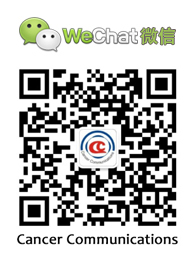doi: 10.5732/cjc.010.10456
Expressions of Toll-like receptors 3, 4, 7, and 9 in cervical lesions and their correlation with HPV16 infection in Uighur women
Ayshamgul Hasimu, Lin Ge, Qiao-Zhi Li, Rui-Ping Zhang and Xia Guo
Department of Pathology, Xinjiang Medical University, Urumqi, Xinjiang 830011, P. R. China. axiangu@yahoo.com.cn.
[Abstract] Recent findings show that Toll-like receptors (TLRs) expressed in immune cells play a crucial role in the innate immune response and the subsequent induction of adaptive immune responses against microbial infection on tissue injury. Furthermore, expression of TLRs in cancer cells is associated with tumor proliferation and invasion. To explore the role of TLRs expression in cervical carcinogenesis in Uighur women, we detected the expressions of TLR3, TLR4, TLR7, and TLR9 in 25 normal cervical tissues, 64 cervical intraepithelial neoplasia (CIN) tissues, and 63 cervical squamous cell carcinoma (CSCC) tissues using immunohistochemical staining, as well as human papillomavirus type 16 (HPV16) infection using PCR. All samples used in this study were from Xinjiang Uighur women. We found the expression levels of TLR4, TLR7, and TLR9 were significantly higher in CIN and CSCC than in normal controls (P < 0.05). Up-regulation of TLR4 and TLR7 were correlated with tumor differentiation but not FIGO stage or lymph node metastasis (P > 0.05). Up-regulation of TLR9 was correlated with lymph node metastasis (P < 0.05) but not tumor differentiation or FIGO stage (P > 0.05). We also analyzed the correlation between the expressions of TLRs and HPV16 infection and found that the expressions of TLR4 and TLR9 significantly correlated with HPV16 infection in CIN (r = 7.434, P = 0.006; r = 7.123, P = 0.008) and CSCC (r = 6.423, P = 0.001; r = 8.478, P = 0.004), whereas the expression of TLR3 was not significantly different in any of the three groups and had no significant correlation with HPV16 infection. Our results suggest that high expression of TLR4, TLR7, and TLR9 may play important roles in the development and progression of CIN and CSCC in Uighur women, and the expressions of TLR4 and TLR9 can be up-regulated by HPV16 infection.
Chinese Journal of Cancer 2011, Volume: 30, Issue 5, Page: 344-350
[ PDF Full-text ]
[Google Scholar]
Cite this article
Ayshamgul Hasimu, Lin Ge, Qiao-Zhi Li, Rui-Ping Zhang and Xia Guo. Expressions of Toll-like receptors 3, 4, 7, and 9 in cervical lesions and their correlation with HPV16 infection in Uighur women. Chin J Cancer. 2011, 30(5):344-350. doi:10.5732/cjc.010.10456
Export citations
EndNote
[Google Scholar]
Cite this article
Ayshamgul Hasimu, Lin Ge, Qiao-Zhi Li, Rui-Ping Zhang and Xia Guo. Expressions of Toll-like receptors 3, 4, 7, and 9 in cervical lesions and their correlation with HPV16 infection in Uighur women. Chin J Cancer. 2011, 30(5):344-350. doi:10.5732/cjc.010.10456
Export citations
EndNote
Comments:





